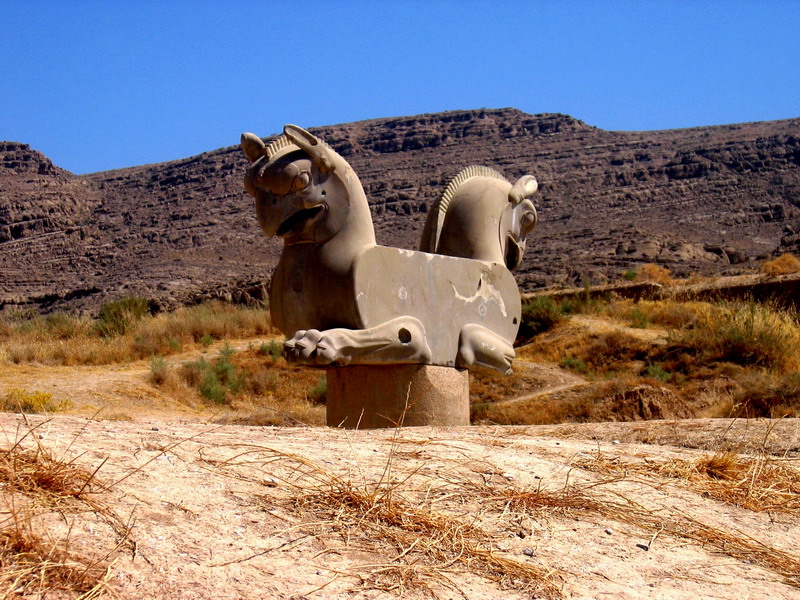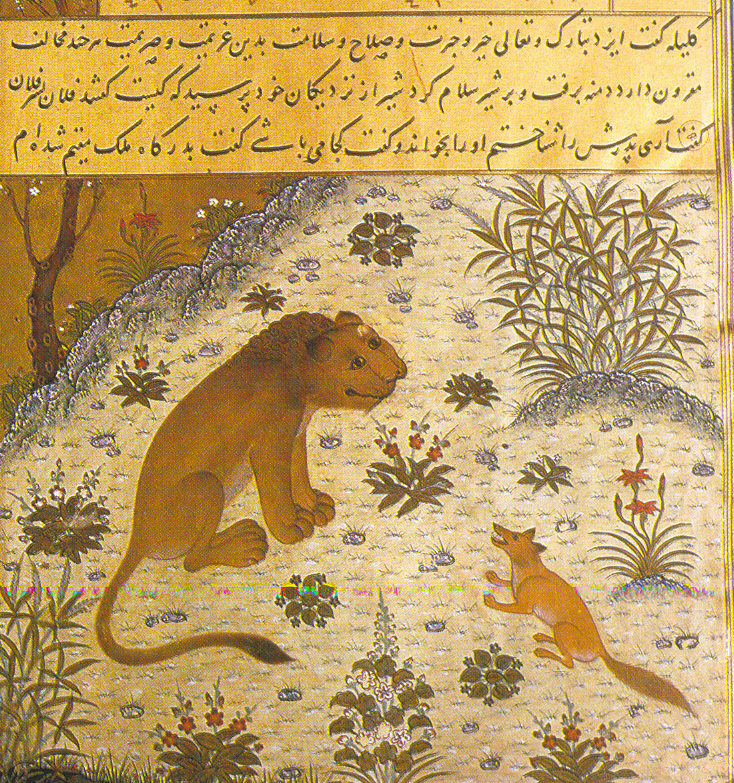|
Azhdaha
Azhdaha, Azhdahak, Ezhdeha ( fa, اژدها) or Azhdar (اژدر) is a mythical creature in Iranian mythology, roughly equivalent to the dragon. They are gigantic snake-like creatures living in the air, in the sea, or on the earth. ''Sad dar-e nathr'' and ''sad dar-e Bondahesh'', ''Shahnameh'' and '' Garshaspnameh'' are among the principal texts that contain information about the creature. In Persian literature, Azhdahas are depicted as a giant snake or lizard with wings. According to tradition, they have a huge body, a fierce face, their mouths are wide with many teeth, and their eyes are bright. Azhdahās are actually normal snakes, according to ''Ajāyeb ul-Makhlooghāt'', a book by Mohammad b. Mahmoud b. Ahmad-e Tusi (wrote in 1160 AD), "when a snake lives 100 years and its length becomes 30 Gazes (a traditional measurement unit approximate to a meter), it is called an azhdahā". He also wrote that "because of their harassment to other creatures, God eventually will throw th ... [...More Info...] [...Related Items...] OR: [Wikipedia] [Google] [Baidu] |
Dragon
A dragon is a reptilian legendary creature that appears in the folklore of many cultures worldwide. Beliefs about dragons vary considerably through regions, but dragons in western cultures since the High Middle Ages have often been depicted as winged, horned, and capable of breathing fire. Dragons in eastern cultures are usually depicted as wingless, four-legged, serpentine creatures with above-average intelligence. Commonalities between dragons' traits are often a hybridization of feline, reptilian and avian features. Scholars believe huge extinct or migrating crocodiles bear the closest resemblance, especially when encountered in forested or swampy areas, and are most likely the template of modern Oriental dragon imagery. Etymology The word ''dragon'' entered the English language in the early 13th century from Old French ''dragon'', which in turn comes from la, draconem (nominative ) meaning "huge serpent, dragon", from Ancient Greek , (genitive , ) "serpent, gian ... [...More Info...] [...Related Items...] OR: [Wikipedia] [Google] [Baidu] |
Persian Mythology
Persian mythology or Iranian mythology ( Persian:اساطیرشناسی ایرانی) is the body of the myths originally told by ancient Persians and other Iranian peoples, and a genre of Ancient Persian folklore. These stories concern the origin and nature of the world, the lives and activities of deities, heroes, and mythological creatures, and the origins and significance of the ancient Persians' own cult and ritual practices. Modern scholars study the myths to shed light on the religious and political institutions of not only modern-day Iran but the Greater Iran, which includes regions of West Asia, Central Asia, South Asia and Transcaucasia where Iranian culture has had significant influence. Historically, these were regions long ruled by dynasties of various Iranian empires, that incorporated considerable aspects of Persian culture through extensive contact with them, or where sufficient Iranian peoples settled to still maintain communities who patronize their respective ... [...More Info...] [...Related Items...] OR: [Wikipedia] [Google] [Baidu] |
Shahnameh
The ''Shahnameh'' or ''Shahnama'' ( fa, شاهنامه, Šāhnāme, lit=The Book of Kings, ) is a long epic poem written by the Persian poet Ferdowsi between c. 977 and 1010 CE and is the national epic of Greater Iran. Consisting of some 50,000 "distichs" or couplets (two-line verses), the ''Shahnameh'' is one of the world's longest epic poems. It tells mainly the mythical and to some extent the historical past of the Persian Empire from the creation of the world until the Muslim conquest in the seventh century. Iran, Azerbaijan, Afghanistan, Tajikistan and the greater region influenced by Persian culture such as Armenia, Dagestan, Georgia, Turkey, Turkmenistan and Uzbekistan celebrate this national epic. The work is of central importance in Persian culture and Persian language, regarded as a literary masterpiece, and definitive of the ethno-national cultural identity of Iran. It is also important to the contemporary adherents of Zoroastrianism, in that it traces the hi ... [...More Info...] [...Related Items...] OR: [Wikipedia] [Google] [Baidu] |
Garshaspnameh
The ''Garshasp-nama'' ( fa, گرشاسپنامه) is an epic poem by Asadi Tusi (died 1072/73). It has been described as one of the best epic poems in Persian literature, comparable to ''Shahnameh'', by Ferdowsi, and the most important work of Asadi Tusi. Asadi Tusi completed the poem in 1066 and dedicated it to a certain Abu Dulaf, the ruler of Nakhjavan (nothing is known about him). The poem has also been translated to other languages such as French and German. It seems that Asadi Tusi wrote this poem based on a written source. Like the ''Shahnameh'', it contains few Arabic loan-words and consists of some 9,000 verses. The main hero of this epic poem is Garshasp, the son of Etret, and grandson of Sām. The poem begins with the story of Jamshid and Zahhak Zahhāk or Zahāk () ( fa, ضحّاک), also known as Zahhak the Snake Shoulder ( fa, ضحاک ماردوش, Zahhāk-e Mārdoush), is an evil figure in Persian mythology, evident in ancient Persian folklore as Azhi Dahā ... [...More Info...] [...Related Items...] OR: [Wikipedia] [Google] [Baidu] |
Persian Literature
Persian literature ( fa, ادبیات فارسی, Adabiyâte fârsi, ) comprises oral compositions and written texts in the Persian language and is one of the world's oldest literatures. It spans over two-and-a-half millennia. Its sources have been within Greater Iran including present-day Iran, Iraq, Afghanistan, the Caucasus, and Turkey, regions of Central Asia (such as Tajikistan) and South Asia where the Persian language has historically been either the native or official language. For example, Rumi, one of the best-loved Persian poets, born in Balkh (in modern-day Afghanistan) or Wakhsh (in modern-day Tajikistan), wrote in Persian and lived in Konya (in modern-day Turkey), at that time the capital of the Seljuks in Anatolia. The Ghaznavids conquered large territories in Central and South Asia and adopted Persian as their court language. There is thus Persian literature from Iran, Mesopotamia, Azerbaijan, the wider Caucasus, Turkey, Pakistan, Bangladesh, India, Tajik ... [...More Info...] [...Related Items...] OR: [Wikipedia] [Google] [Baidu] |
National Epic
A national epic is an epic poem or a literary work of epic scope which seeks or is believed to capture and express the essence or spirit of a particular nation—not necessarily a nation state, but at least an ethnic or linguistic group with aspirations to independence or autonomy. National epics frequently recount the origin of a nation, a part of its history, or a crucial event in the development of national identity such as other national symbols. History In medieval times Homer's ''Iliad'' was taken to be based on historical facts, and the Trojan War came to be considered as seminal in the genealogies of European monarchies. Virgil's ''Aeneid'' was taken to be the Roman equivalent of the ''Iliad'', starting from the Fall of Troy and leading up to the birth of the young Roman nation. According to the then prevailing conception of history, empires were born and died in organic succession and correspondences existed between the past and the present. Geoffrey of Monmout ... [...More Info...] [...Related Items...] OR: [Wikipedia] [Google] [Baidu] |
Greater Iran
Greater Iran ( fa, ایران بزرگ, translit=Irān-e Bozorg) refers to a region covering parts of Western Asia, Central Asia, South Asia, Xinjiang, and the Caucasus, where both Iranian culture and Iranian languages have had a significant presence and impact. Historically, this was a region long-ruled by the dynasties of various Iranian empires, under whose rule the local populace incorporated considerable aspects of Persian culture through extensive inter-contact, or alternatively where sufficient Iranian peoples settled to still maintain communities who patronize their respective cultures; it roughly corresponds geographically to the Iranian plateau and its bordering plains. The Encyclopædia Iranica uses the term ''Iranian Cultural Continent'' to describe this region. In addition to the modern state of Iran, the term "Greater Iran" includes all of the territory ruled by various Iranian peoples throughout history, including in Mesopotamia, the eastern h ... [...More Info...] [...Related Items...] OR: [Wikipedia] [Google] [Baidu] |
Sām
Sām ( fa, سام), also (sam) transliterated Saam, is a mythical hero of ancient Persia, and an important character in the Shahnameh epic. He was the son of Nariman, grandson of Garshasp and father to Zāl. He was Iran's champion during the rule of Fereydun, Manuchehr and Nowzar. He was appointed by Manuchehr to rule Zabulistan (Sistan), and then Mazandaran. After Manuchehr, because of Nowzar's corrupted and failed rulership, Iranian champions asked Sām to rule Iran. Sām didn't accept, he supported Nowzar and advised him to follow Fereydun and Manuchehr. Sām returned to Mazandaran, and died soon after that. Afrasiab Afrasiab ( fa, ''afrāsiyāb''; ae, Fraŋrasyan; Middle-Persian: ''Frāsiyāv, Frāsiyāk'') is the name of the mythical king and hero of Turan. He is the main antagonist of the Persian epic Shahnameh, written by Ferdowsi. The mythical ki ... then attacked Zabulistan. In Persian, based on Dehkhoda dictionary, Sām or Saam means Fire. References Ext ... [...More Info...] [...Related Items...] OR: [Wikipedia] [Google] [Baidu] |
Rostam
use both this parameter and , birth_date to display the person's date of birth, date of death, and age at death) --> , death_place = Kabulistan , death_cause = With the conspiracy of his half-brother Shaghad, he fell into a well full of poisoned spears and was killed in Kabulistan. , body_discovered = , resting_place = , resting_place_coordinates = , burial_place = , burial_coordinates = , monuments = , nationality = , other_names = RustamRustem , siglum = , citizenship = , education = , alma_mater = , occupation = , years_active = , era = , employer = , organization = , agent = , known_for = Seven Labours Battle with Sohrab Battle with Esfandiyārkilling Demons , notable_works = , style = , net_worth = , height = , television = , ... [...More Info...] [...Related Items...] OR: [Wikipedia] [Google] [Baidu] |
Alexander The Great
Alexander III of Macedon ( grc, Ἀλέξανδρος, Alexandros; 20/21 July 356 BC – 10/11 June 323 BC), commonly known as Alexander the Great, was a king of the ancient Greek kingdom of Macedon. He succeeded his father Philip II to the throne in 336 BC at the age of 20, and spent most of his ruling years conducting a lengthy military campaign throughout Western Asia and Egypt. By the age of thirty, he had created one of the largest empires in history, stretching from Greece to northwestern India. He was undefeated in battle and is widely considered to be one of history's greatest and most successful military commanders. Until the age of 16, Alexander was tutored by Aristotle. In 335 BC, shortly after his assumption of kingship over Macedon, he campaigned in the Balkans and reasserted control over Thrace and Illyria before marching on the city of Thebes, which was subsequently destroyed in battle. Alexander then led the League of Corinth, and used his author ... [...More Info...] [...Related Items...] OR: [Wikipedia] [Google] [Baidu] |





.png)